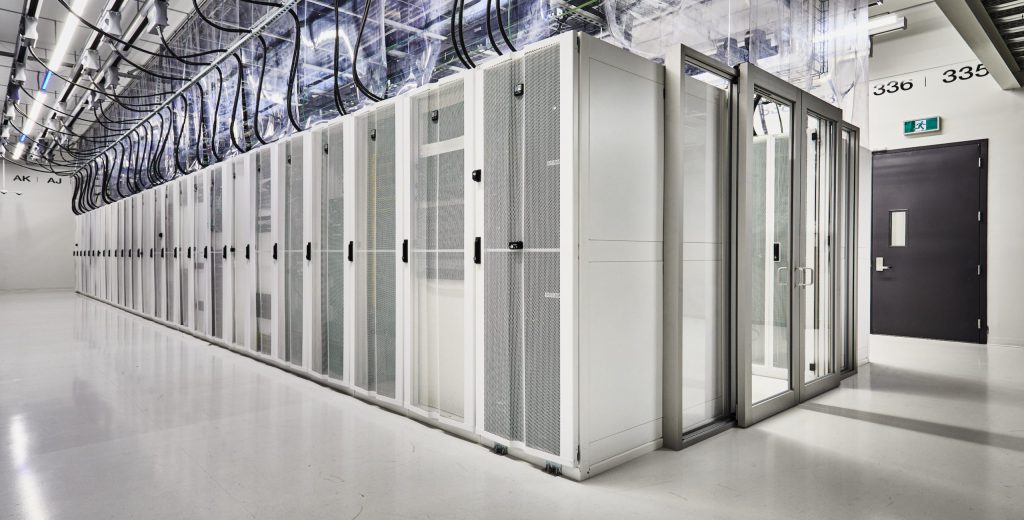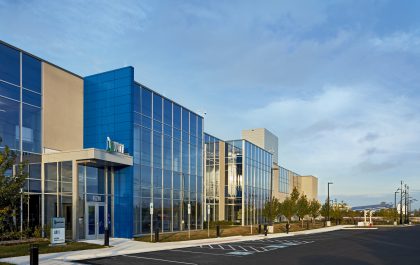In the past, finding a place to host, store and run workloads wasn’t complicated. You had a data center on premise that stored your data, files and applications. Since the data center was located close by, latency was never really a concern. But the data center had to be built to handle peak capacity, so organizations often overspent on infrastructure and hardware that were frequently underutilized.
Moving Beyond On-Premises Data Centers
A lot has changed since the heyday of the on-prem data center. In fact, it would be difficult to find a large, on-prem data center today used for anything except legacy systems hosted on historic mainframes or really compute-heavy, server-centric tasks that would be rendered nearly impossible with even the smallest amount of latency.
In fact, there are very few workloads that organizations still choose to host in on-prem data centers that they own, operate and maintain. Today, on-prem data centers are often utilized for large, centralized enterprise applications. They’re used in industries where the information is considered too sensitive to host in multi-tenant environments, or where the requisite systems are still moving to the cloud – such as the healthcare industry. They’re also oftentimes preferred for workloads like virtual desktops that would be intolerable if latency or slow Internet connections impacted performance.
So where did the rest of the on-prem data centers go? What contributed to them being an endangered species in today’s IT ecosystem? Ultimately, two new solutions entered the marketplace and drove them to the brink of extinction – first, off-prem, outsourced data centers, and second, the cloud. Let’s look at each individually.
Off-prem, outsourced data centers
As data centers have increased in sophistication and density, it’s been increasingly difficult and untenable for most organizations to build and manage on-prem data centers.
The modern data center requires sophisticated electronic and physical security, resilient and redundant power and cooling, and rich connectivity. Gone are the days of data centers being a large room in the central office with a raised floor and a few air conditioners keeping everything cool. Today, data centers are typically large structures with miles of cabling, air and liquid cooling, and robust electrical infrastructure that can function even in the event that nature takes liberties with the power grid.
Off-prem, outsourced data centers allow organizations to let experts design and build modern data centers, and then simply rent/lease the space for equipment. While end users may still need IT staff on site to manage their hardware and networking equipment, they aren’t responsible for the maintenance and management of the facility. And, with digital tools and applications becoming so important for enterprises, the care and maintenance of data centers would effectively require having a large team within the enterprise dedicated to that responsibility alone.
Companies choosing off-prem data centers also get the benefit of leveraging the deep data center experience and expertise of companies that are dedicated to the design, construction, maintenance and management of data centers. There are very few companies that exist today with as much knowledge and experience in data center construction and operations as actual data center providers.
The cloud
The cloud – which is effectively outsourced infrastructure that is owned and operated by a third party – was created with five core principals in mind:
- On-demand self service
- Broad network access
- Multi-tenancy and resource pooling
- Rapid elasticity and scalability
- Measured service
Ultimately, the cloud enables IT departments to quickly ramp up their infrastructure to meet requirements. The process to do so is quick, efficient and unencumbered.
Since the infrastructure often exists in a shared, multi-tenant environment, it can be provisioned quickly without the need to build out a physical data center and the underpinning computing infrastructure by the end user. That opens the door for a lot of interesting use cases and benefits.
Small, emerging startups are easier to get off the ground thanks to the cloud because finding and outfitting data center space is no longer required, eliminating real estate and hardware capital expenditures from their startup costs. The ability to establish infrastructure quickly in different geographies can make it faster and easier to meet edge computing needs and requirements. Large enterprises and organizations can also find some relief and cost savings from the cloud thanks to its elasticity – not having to build expensive IT infrastructure for their peak requirements and maintain it – even when it’s underutilized.
With all these benefits of the cloud, it may be surprising that outsourced data centers still exist. Why would an organization want to purchase IT equipment and host it in any physical data center – even one that they didn’t have to purchase or build – when the elastic and scalable cloud is ready and available to meet their needs at a moment’s notice?
That’s a good question with a very simple answer – some workloads are better suited for hosting in the cloud, and some really need to be in a physical data center. And, since friends don’t let friends build and operate their own data centers in 2022, those data centers are leased from companies like Vantage Data Centers.
But what kinds of workloads are best in the cloud? And which should be in a leased, physical data center? I’ll take a deep dive into that question in my next article on Data Centers Today.
Steve Conner
Steve Conner serves as vice president, solutions engineering at Vantage Data Centers. He is responsible for leading the company’s sales team on technical requirements in pursuit of new business.
Conner has more than 25 years of experience in building and leading highly motivated sales and engineering teams. Prior to Vantage, Conner led the sales and engineering teams at Cloudistics, taking the start-up’s revenue from $0 to over $5 million in its first year of selling. He held multiple senior level positions at Nutanix where he built a multi-million-dollar business unit focused on managed service providers.
Conner holds a Bachelor of Science degree in computer science from University of Richmond, a Master of Science degree in computer science from George Mason University, and an MBA from Florida Institute of Technology. As part of his focus on technology and enterprise architecture, Conner has earned multiple certifications including CCNP/DP, CISSP and ISSAP.



